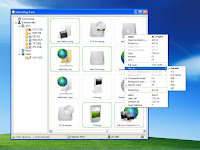The Mozilla Foundation describes itself as "a non-profit organization dedicated to preserving choice and promoting innovation on the Internet". Mozilla Europe, Mozilla Japan and Mozilla China are non-profit organizations whose mission is to help promote and deploy Mozilla products and projects. They are independent of, but affiliated with, the Mozilla Foundation.
Mozilla Corporation
On August 3, 2005, the Mozilla Foundation launched a wholly owned subsidiary called the Mozilla Corporation to continue the development and delivery of Mozilla Firefox and Mozilla Thunderbird. The Mozilla Corporation takes responsibility for release planning, marketing and a range of distribution-related activities. It also handles relationships with businesses, many of which generate income. Unlike the Mozilla Foundation, the Mozilla Corporation is a taxable entity, which gives it much greater freedom in the revenue and business activities it can pursue.









 Object animation is a form of end movement animation that involves the animated movements of any non-drawn objects such as toys, blocks, dolls, etc. which are not fully malleable, such as clay or wax, and not planned to look like a identifiable human or animal nature.
Object animation is a form of end movement animation that involves the animated movements of any non-drawn objects such as toys, blocks, dolls, etc. which are not fully malleable, such as clay or wax, and not planned to look like a identifiable human or animal nature.













